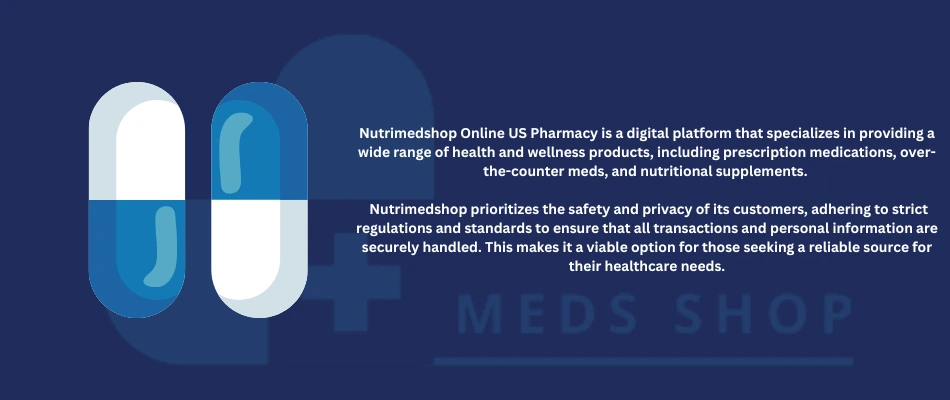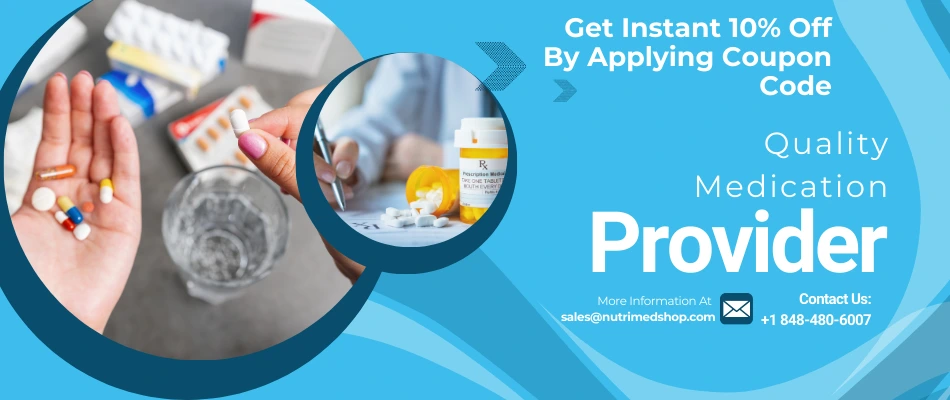- enquiry@nutrimedshop.com
- +1 848-480-6007
- Adderall
- Adipex
- Alprazolam
- Ambien
- Ativan
- Carisoprodol
- Clonazepam
- Codeine
- Darvocet
- Demerol
- Diazepam
- Dilaudid
- Fioricet
- Hydrocodone
- Hydromorphone
- Lorazepam
- Lorcet
- Lortab
- Meridia
- Methadone
- Norco
- Opana ER
- Oxycodone
- Oxycontin
- Percocet
- Phentermine
- Roxicodone
- Soma
- Suboxone
- Subutex
- Tramadol
- Valium
- Viagra
- Vicodin
- Xanax
- Klonopin
- Cialis
Vicodin Category
Vicodin 5/500mg
$349 - $749
Vicodin 7.5/750mg
$450 - $1290
Category Description
For safe and efficient online Vicodin purchases, choose reputable pharmacies offering overnight delivery for prompt and secure receipt of authentic and quality medication at the best prices. Buying Vicodin online Overnight delivery can be a convenient and safe option for managing pain effectively.
What is Vicodin?
- Vicodin is the brand name for a prescription pain medication containing a combination of hydrocodone and acetaminophen. The generic name is hydrocodone/acetaminophen.
- Vicodin is an opioid painkiller prescribed to treat moderate to severe pain. It contains two active ingredients – hydrocodone, which is an opioid agonist that binds to opioid receptors in the brain to block pain signals, and acetaminophen, which enhances the pain relieving effects.
- The intended uses of Vicodin include managing acute, chronic, or postoperative pain when over-the-counter pain medications like ibuprofen or acetaminophen are not sufficient. It can provide more potent pain relief than non-opioid analgesics alone.
History of Vicodin
Vicodin was first developed in Germany in the 1960s by the pharmaceutical company Knoll. The original formulation contained hydrocodone and paracetamol (acetaminophen).
In 1972, Knoll partnered with Abbott Laboratories which helped introduce Vicodin to the US market. The FDA approved Vicodin for use in the United States in 1984.
Vicodin rose in popularity in the 1990s and 2000s. Several factors contributed to this rise:
- Aggressive marketing campaigns by Abbott Laboratories promoted Vicodin to physicians as a safe and effective painkiller. This helped drive up prescriptions.
- The American Pain Society began advocating for pain to be assessed as the “fifth vital sign.” This resulted in physicians becoming more focused on aggressive pain management.
- High-profile figures like Rush Limbaugh and Brett Favre openly discussed their struggles with Vicodin addiction, which increased public awareness.
- As other opioids like OxyContin were being abused, some patients and physicians switched to Vicodin as an alternative.
By the early 2000s, Vicodin had become one of the most widely prescribed and abused prescription opioids in the United States. In 2010, there were over 130 million Vicodin prescriptions dispensed in the US.
How Vicodin Works
Vicodin contains a combination of hydrocodone and acetaminophen. An opioid painkiller called hydrocodone functions by attaching itself to spinal cord and brain opioid receptors.This blocks pain signals from being sent to the brain and reduces the perception of pain.
The other ingredient in Vicodin, acetaminophen, is a non-opioid analgesic that inhibits COX enzymes and prevents the synthesis of prostaglandins involved in pain and inflammation. It provides additional pain relief by working through different mechanisms than hydrocodone. The combination of an opioid like hydrocodone and a non-opioid like acetaminophen allows lower doses of each to be used, enhancing pain relief while reducing side effects.
Dosages and Administration
Vicodin is available in tablet form containing combinations of hydrocodone and acetaminophen. The most common dosages are:
- 5mg hydrocodone / 300mg acetaminophen
- 7.5mg hydrocodone / 300mg acetaminophen
- 10mg hydrocodone / 300mg acetaminophen
The recommended dosing schedule for Vicodin depends on the severity of pain. For mild to moderate pain, the typical dosing is one tablet every 4 to 6 hours as needed. For severe pain, two tablets may be taken every 4 to 6 hours as needed.
The maximum daily dose is 8 tablets (4000mg of acetaminophen) per day to avoid acetaminophen toxicity. Extended release formulations are also available.
Vicodin is taken orally by mouth. Tablets are meant to be consumed whole, without being chewed or mashed. Vicodin provides rapid pain relief, with onset of action within 30-60 minutes following oral ingestion.
Warnings and Precautions
Vicodin should be used with caution or avoided entirely in certain situations and populations:
- Those who have previously abused drugs or alcohol. Vicodin has a high risk for dependence and addiction. Those recovering from substance abuse disorders have an increased chance of relapse if taking Vicodin.
- Elderly patients. Vicodin is more likely to cause confusion, excessive drowsiness, and breathing problems in older adults. Lower doses should be used.
- Pregnant women. Vicodin can cause withdrawal symptoms in newborns if taken late in pregnancy. Infants may also have breathing problems if their mothers use Vicodin right before delivery.
- Patients with head injuries, brain tumors, or increased intracranial pressure. Vicodin can make these conditions worse due to its effects on respiration.
- Patients with liver or kidney disease. Vicodin is metabolized by the liver and excreted by the kidneys, so impaired function of these organs can lead to elevated drug levels and more side effects.
- Patients with lung disease such as asthma or COPD. Vicodin can worsen breathing difficulties.
Common side effects of Vicodin include:
- Drowsiness, dizziness, lightheadedness
- Nausea, vomiting, constipation
- Itching, sweating, dry mouth
- Headaches, tremors, muscle twitches
- Mood changes, confusion, hallucinations
Rare but serious risks include depressed respiration, seizures, and allergic reactions such as swelling, hives, or rash. Seek medical help if any concerning reactions occur while taking Vicodin.
Overdose Symptoms and Treatment
Vicodin overdose can occur when someone takes more than the recommended or prescribed amount. Overdose symptoms may include:
- Extreme drowsiness
- Slowed or stopped breathing
- Cold, clammy skin
- Pinpoint pupils
- Loss of consciousness
- Coma
An overdose can be life-threatening, so seek emergency medical help right away if an overdose is suspected. Call 911 or poison control. Do not wait for symptoms to worsen.
Emergency responders will focus on restoring breathing and getting oxygen to the brain. This may involve giving oxygen, doing rescue breathing, or intubating the person.
The opioid antagonist naloxone is a very effective antidote that can rapidly reverse an opioid overdose. It works by binding to opioid receptors to reverse the effects. Multiple doses of naloxone may be needed, or an IV infusion started.
After an overdose, continued monitoring and supportive medical care are essential. Mental health support may also help prevent future overdoses. Removing excess Vicodin from the person’s environment can also help reduce risk.


